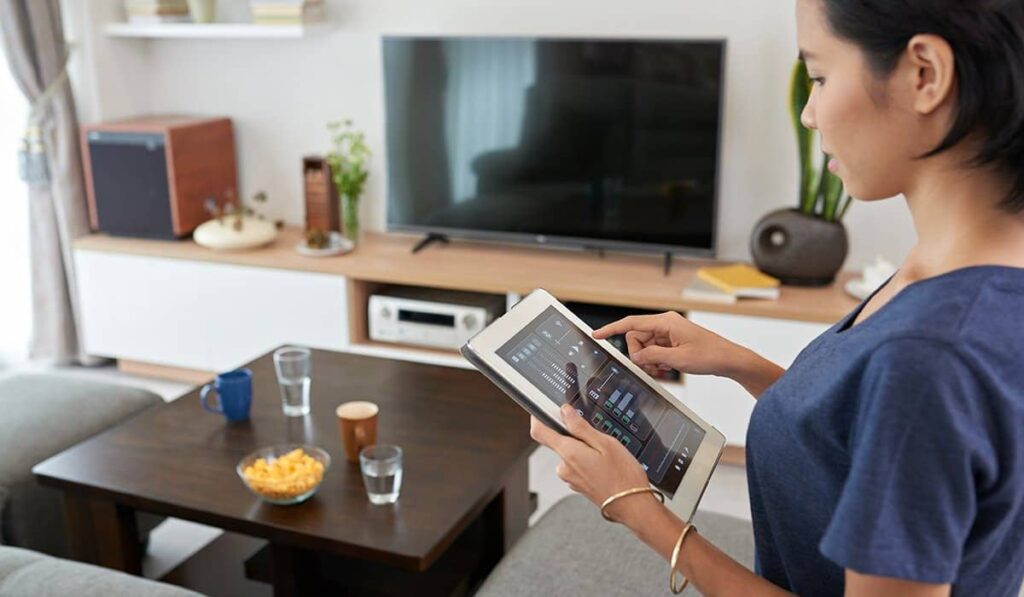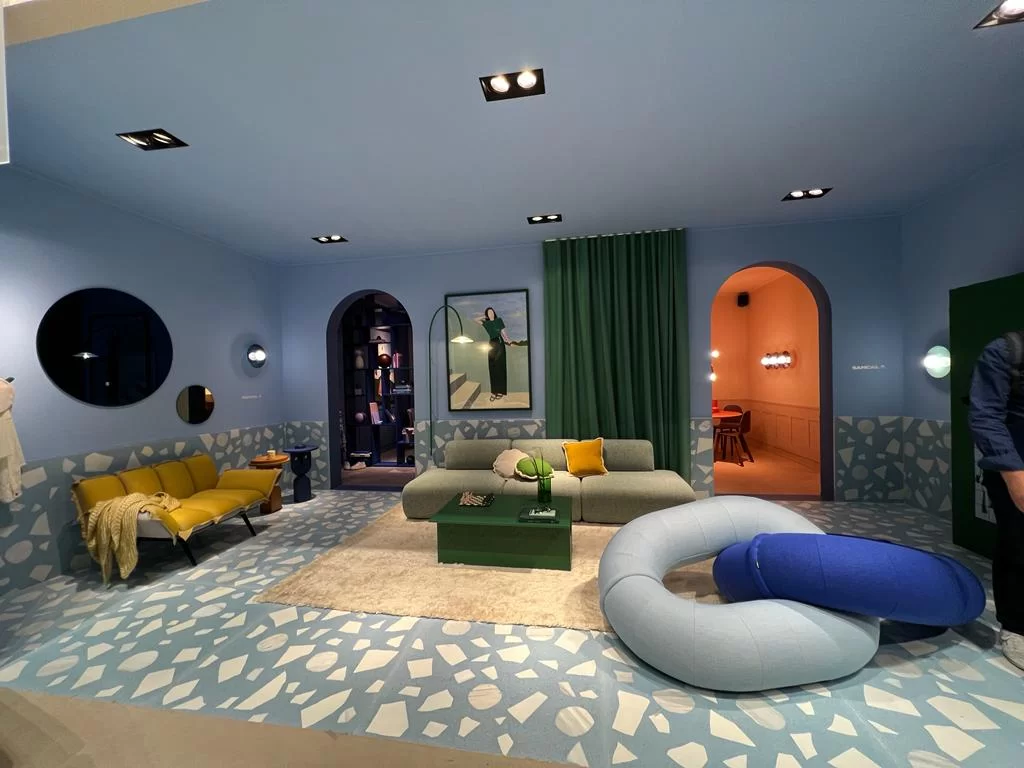Smart home technology: advantages and challenges,
Incorporating smart home technology into futuristic interior design creates a seamless and comfortable living experience.
With just the push of a button or a simple voice command, homeowners can control different aspects of their homes,
Including lighting, temperature, security systems, and even home entertainment systems.
This technology can also be integrated with other smart devices, such as voice assistants, smartphones, and smart watches.
This makes it easier for homeowners to access and control their homes remotely.
However, integrating smart home technology into future interior design also presents challenges.
One challenge is ensuring technology is seamlessly integrated into the design without compromising the overall aesthetic.
Another challenge is ensuring that the technology is easy to use and easy to understand for all family members, regardless of their age or technical experience.
There is also the challenge of ensuring that technology is secure and protected from cyber threats.

Advantages of smart home technology
Here are some of the advantages of integrating smart home technology into future interior design in the following points:
Increase comfort and fit:
Smart home technology can make everyday activities easier and more convenient, such as controlling lights, temperature, and entertainment systems from a single device.
Improve energy efficiency:
Homeowners can better control and monitor their energy use thanks to smart home technology.
Which leads to lower utility bills and a reduced carbon footprint.

Enhanced security:
Smart home technology allows for advanced security measures, such as remote monitoring of cameras and sensors, and the ability to lock and unlock doors remotely.
Customization:
Smart home technology allows homeowners to customize their home environment to their preferences, such as adjusting lighting and temperature based on individual preferences or time of day.
Increase home value:
Incorporating smart home technology into future interior design increases the value of the home and makes it more attractive to buyers if you consider putting it up for sale.
Increase energy efficiency:
Smart home technology allows for more efficient energy use, which can lead to cost savings and reduced environmental impact.

Enhanced security:
Smart home systems can include security features such as cameras, motion sensors, and smart locks.
Providing homeowners with greater peace of mind and control over their home security.
Improve accessibility:
Smart home technology makes homes accessible to individuals with disabilities or limited mobility.
Features such as voice control, automated lighting and temperature control can also make it easier for individuals to navigate their home environment.
Overall, incorporating smart home technology into future interior design offers many benefits, including increased comfort, energy efficiency, security, accessibility, customization, and resale value.
However, there are also some challenges to consider, such as the initial cost of installation, potential privacy concerns, and the need for ongoing maintenance and updates.
Smart home technology challenges
Here are some of the challenges facing integrating smart home technology into future interior design:
Complexity:
Integrating multiple smart devices into one system can be complex, and requires technical expertise to set up and maintain.
The cost:
Smart home technology can be expensive, and incorporating it into your future interior design may require a significant investment.
Compatibility:
Different smart home devices may use different communication protocols, making it difficult to integrate them into a single system.

Privacy and safety:
There is always a risk of privacy and security being compromised with smart home technology, and it is important to ensure that the technology is secure and that personal data is protected.
User experience:
Although smart home technology can improve home functionality and efficiency, it is important to ensure that it does not impact the user experience.
Complex systems or difficult-to-use interfaces can frustrate users and ultimately detract from the overall design.
Integration and compatibility problems:
Different smart home devices may not be compatible with each other, which may cause integration issues.
This may result in devices not working as intended or not communicating with each other.
Additionally, some smart home systems may not work with older home systems or appliances, which may require expensive upgrades.
Cyber security risks:
Smart home devices are connected to the Internet and can be vulnerable to cyber attacks, which can put a homeowner’s privacy and security at risk.
This risk increases in future interior design that relies heavily on smart home technology.
There are more entry points that hackers can exploit.

Technical complexity:
Smart home technology can be complex, and homeowners may need technical assistance to set up and maintain the devices.
This can be a challenge, especially for those who are not familiar with the technology,
and may require additional costs for professional installation and maintenance.
Despite these challenges, the benefits of integrating smart home technology into future interior design,
It can outweigh the costs and challenges faced by those who prioritize comfort and innovation in their home design.
Also despite these challenges, the increasing availability and affordability of smart home technology makes it a viable option for those interested in creating a futuristic interior.
However, careful consideration should be given to the specific needs and objectives of the space, as well as the capabilities and limitations of the technology used.
With proper planning and implementation, integrating smart home technology can create a seamless and impressive fusion of form and function.
More on INJ Architects:
